An agricultural drone is an unmanned aerial vehicle used in agricultural operations to improve productivity and monitor crop growth and yield. Agricultural drones provide information on crop growth stages, health, and soil variability.
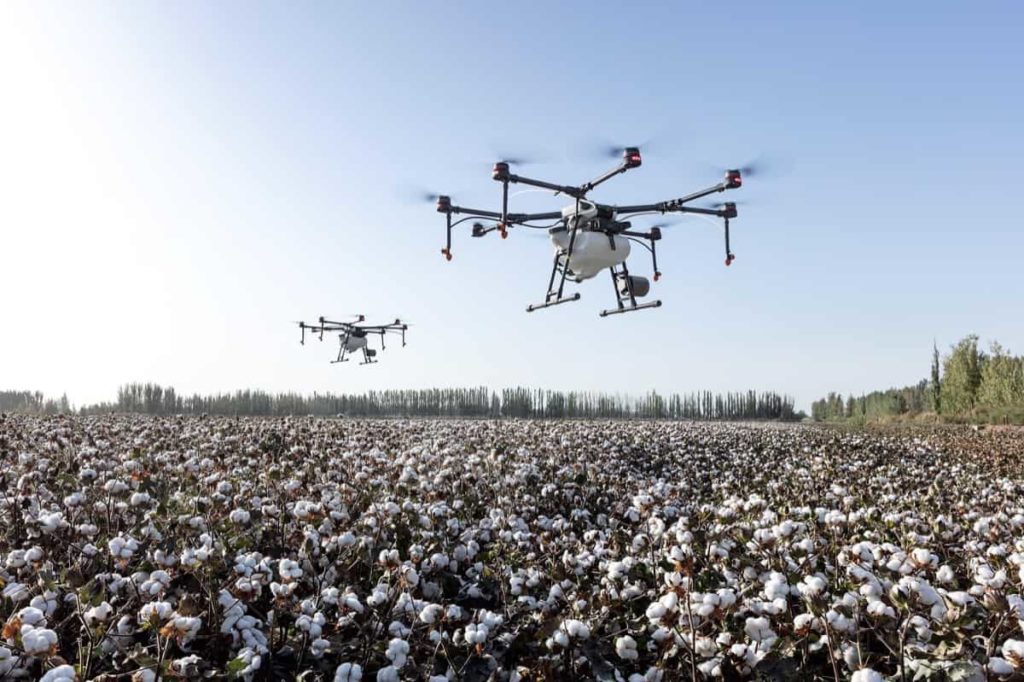
A guide to understand importance of Drones in Agriculture/Farming
What are agricultural or farming drones?
A drone used for agricultural activities is called an agriculture drone. It is used primarily to aid crop production and monitor crop growth. The drone can be controlled remotely or travel according to a predetermined route using complex automation algorithms built during its development.
It uses advanced agricultural sensors and digital imaging capabilities, including a high-resolution camera. Agriculture drones can do anything from precision agriculture, weed control, or efficient spreading fertilizers to improving field management. Results include reduced operating costs, improved crop quality, and increased yield rates.
What are the uses of drone technology in agriculture?
The main use of drones in agriculture is to collect highly detailed data using various sensors. This data can then be converted into various maps and 3D models of the area, which are then used to analyze crop health, detect plant disease and stress and identify irrigation problems. Another emerging use of drones is spraying chemicals to fight diseases and pests, as well as spreading mulch and planting seeds.
Benefits of agricultural drones
- Security – Trained drone pilots operate the drones. Therefore, there is no possibility of their misuse.
- High-performance – Drones have no operational delays and can operate at twice the speed of human labor.
- Water saving – Compared to traditional spraying methods, agricultural drones use ultra-low volume (ULV) spraying technology, thereby saving more water.
- Low cost and easy to maintain – Agri-Drones are robust, low cost, and require minimal maintenance. Some key features include a separate container, a low-cost frame, and precision spraying of pesticides.
- It helps in achieving higher production by using resources efficiently. It provides good ROI (return on investment).
- Drones are widely used in agriculture for spraying pesticides and insecticides because of their remote control operation.
- It helps in environmental data monitoring, which helps in smart farming.
- It helps farmers to locate their fields quickly and efficiently. It saves time in determining the status of fields.
- They are easy to use with very basic training. The latest agricultural drones help collect data that helps improve crop health.
What are the main disadvantages of drones in the agriculture sector?
- Most drones have a short flight time and cover a small area. On the other hand, long flight time and long-range drones are expensive.
- Drones with more features are also more expensive.
- Operating an agricultural drone requires basic knowledge and skills.
- Government approval is required to use it.
In case you missed it: Drone Farming, Drone Technology In Agriculture
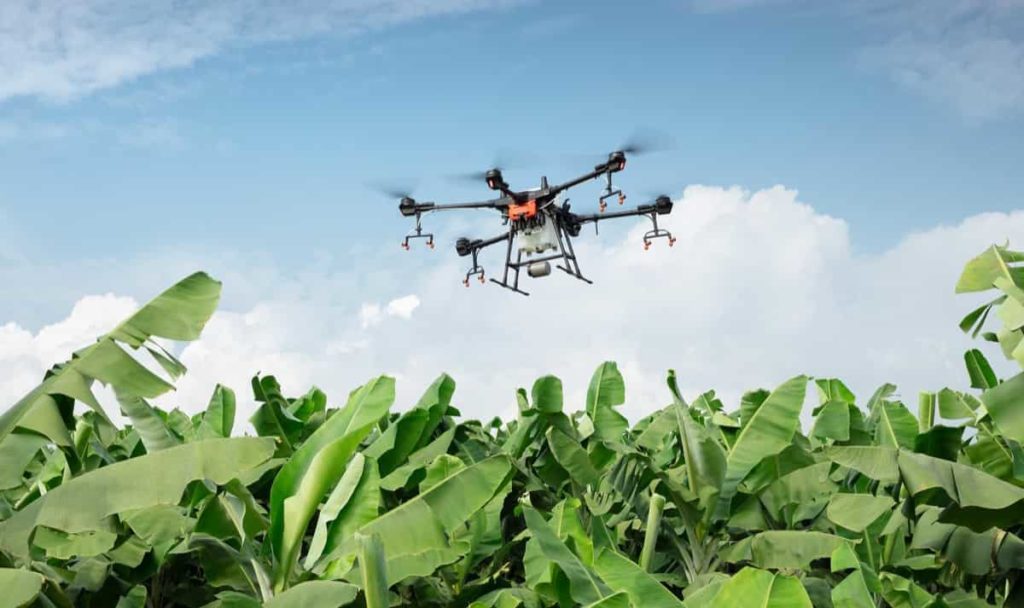
How much does an agricultural drone cost?
- In the agricultural sector, drones for spraying costs about Rs. 4-5 lakh
- High-tech drones used specifically for agriculture start at Rs. 8-10 lakh
What is the best drone for agriculture?
- DJI Agras MG-1: (Best Drone for Farmers)
- DJI Mavic 2 Pro: (Best Drone for Farmers for Mapping)
- DJI Phantom 4: (Best Drone for Farmers for Crop Monitoring)
- DJI Mavic Pro: ( Best Drone for Farmers for Pesticide Application)
- DJI Mavic Mini: (Best Budget Drone for Farmers)
Best Drones for agriculture crop spraying
- DJI Agras T30 – The DJI Agras T30 crop spraying drone comes with a 30-liter tank and can also be attached to a 40-liter expansion tank.
- DJI Agras T10 has the same features as the Agras T30 but has less capacity, a smaller tank of 8 liters, and the spray system has 4 nozzles that can spray 2.4 liters per minute and has a width of 5 meters.
- DJI Agras T20 – The Agras T20 comes with a 20-liter spray tank and can also be mounted with a DJI Spreader 2.0 tank.
How is drone technology improving?
Time and cost savings – One of the main benefits of using smart technology in agriculture is that it takes less time to complete many tasks. Drones spend much more time mapping, surveillance, and crop spraying than manned aircraft. Drones are also used to plant seeds and spray crops with water, fertilizers, pesticides, and herbicides.
Improved crop yields – Drones allow farmers to get crop data faster and more frequently, keeping them on top of things like plant disease, irrigation issues, and soil conditions. As a result, it will improve overall crop quality and yield and save money in the long run.
Safe way to spray crops – Pests and plant diseases are always a problem for farmers; spraying chemicals manually will be time-consuming. Using drones to treat infected plants is safer and more efficient than using manual labor and land-based machinery. Smart drones come with autonomous flight modes, allowing farmers to plan flight paths around only the areas that need to avoid unnecessary chemicals to healthy parts of the field. Not only is this a safer method to treat crops, but farmers will also save money by not wasting treatments on plants that are not needed.
What is the application of drones?
- Monitoring plant health
- To count the number of plants
- Spraying pesticides and insecticides on crops
- Scheduling sowing and harvesting at appropriate times as needed
- Minimizing the use of scarce resources
- Future recording data for analysis
Seed planting – Seed planting using drone technology is relatively new compared to other drone applications in agriculture. Some agricultural drone companies are also testing drone payload performance in the form of tree seeds, fertilizers, water, and herbicides to gauge the cost-effectiveness of the technology. Once it goes through the testing phase, drones will boost the effectiveness and efficiency of the agriculture industry and make it much easier to plant seeds and deliver other essential nutrients to the soil.
In case you missed it: Top 20 Steps to Boost Rice Yield: How to Increase Paddy Production and Quality
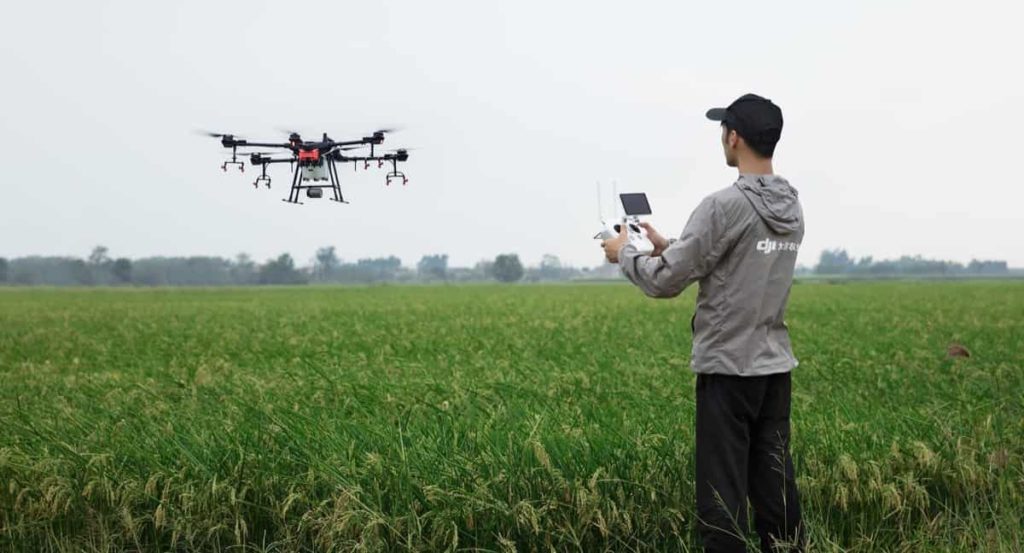
Health assessment – Finally, drones are effectively used to monitor the health of crops. Drones equipped with sensors are used for real-time imagery for crop health analysis.
How are drones useful in Indian agriculture?
Agricultural drones can analyze soil and fields for effective field planning. They can be used to install sensors that measure soil moisture, terrain, soil conditions, soil erosion, soil nutrients, and soil fertility.
Crop spraying – Another area of use of drones in agriculture involves crop spraying. Traditionally, farmers must spray the whole field manually from vehicles, or sometimes some even use airplanes for this purpose.
Crop mapping and surveying – Another important drone application in the agriculture sector is the use of technology to monitor crops across large fields. Traditionally this has to be done manually by farmers, which takes forever and is highly inefficient. More recently, tech companies are using satellite or aerial imagery to survey and map crop fields at a cost. In support of precision farming, drones can test soil health, monitor crop health, help plan irrigation schedules, apply fertilizers, and provide yield data can estimate and provide valuable data for climate analysis.
Are agricultural drones sustainable?
- The implementation of drones in scientific research, renewable energy, geology, or agriculture is already a reality that opens doors to a future full of possibilities.
- The development of UAVs (Unmanned Aerial Vehicles), or as they are popularly known, drones, is becoming a major ally of sustainability.
How are drones used in the agriculture sector for small farmers?
- Drones can be used on small farms to map pre-planting patterns, helping farmers make the most of the area for growing crops.
- Growers can also strategize preferred planting patterns for individual crops using drones, significantly reducing the time it takes to map planting patterns on foot.
What types of drones are used in agriculture?
Drones for agricultural use come in two categories, fixed-wing, and multi-copter drones. Fixed-wing drones are more robust, can withstand harsher weather conditions, and generally have longer flight times than multi-copter drones.
Here are the main types of drones, their uses, and their strengths and weaknesses.
1. Multi-rotor drones – Multi-rotor drones are quick to set up in the field and can take off and land vertically. The mission setup is simple; no need to plan take-off and landing in the air like a fixed wing. They can fly more precisely, turn quickly, and fly at low altitudes if they need to take highly detailed images.
2. Fixed-wing drones – These have long-range flight capabilities – an advantage over large areas. Because these drones can travel great distances, it cannot be easy to stay within the operator’s line of sight, which is a legal requirement. Image quality may suffer as a result of their high speed.
3. Single rotor drone – Single rotor drone types are robust and durable. A single rotor has only one rotor, like a large spinning wing, plus a tail rotor to control direction and stability. A single-rotor helicopter allows for much longer blades, which are more like a rotating arm than a propeller, allowing for greater efficiency.
4. Fixed-wing hybrid VTOL – Hybrid VTOL drone types combine the advantages of fixed-wing and rotor-based designs. This drone has rotors attached to fixed wings, allowing it to hover, take off, and land vertically. There are a few new types of hybrids on the market, but this option may become more popular as technology advances. These drones offer the best of both worlds – fixed-wing and rotor-based designs.
Why are drones becoming popular in agriculture?
One major benefit of drones in agriculture is their ability to meet the population’s growing needs. Drone technology has helped farmers overcome the hurdles in checking crops in the field. Satellite imagery is the most sophisticated method of crop monitoring to date. Still, this technology has many limitations, so farmers opt for drones.
Satellite images lack quality when it comes to accuracy, as images are acquired only once a day, which is not enough for farmers. However, drone technology can give you a live feed, or as many pictures as needed, making them far more accurate and efficient.
Drones have several additional advantages:
- They do not need petroleum, which pollutes the environment, but depend on environmentally friendly electricity.
- They are much cheaper than choppers and other capital-intensive machinery. They are very easy to use as compared to other heavy machines.
How many acres can a drone spray?
Based on a 3-gallon-per-acre application rate, including battery change and payload refilling time, agricultural drones with the upgrade kit to drone application system can cover an impressive 14 acres per hour or about 100 acres per hour.
What is the future of drone technology?
Agricultural drones empower farmers to adapt to specific environments and make informed choices. The data obtained helps in crop health, crop treatments, crop scouting, irrigation, field soil analysis, and estimation of crop damage. Drone surveying helps increase crop production and reduce time and costs. The future of drones is also promising, as drones are being developed to act as mechanical pollinators and incorporate smart applications, allowing drones to address the challenge of growing food insecurity.
A promising and affordable technology is being developed. Drones can act as mechanical pollinators and provide important benefits. While insect vectors remain the most important pollinators, drones may eventually provide significant support, especially with the decline of bees. Progress is needed in this particular field, but researchers believe that drones could be able to efficiently transport and disperse pollen grains in gardens or fields.
In case you missed it: Best Season to Grow Onions at Home in India: in Pots, Terrace, Apartment Balcony, and Backyards
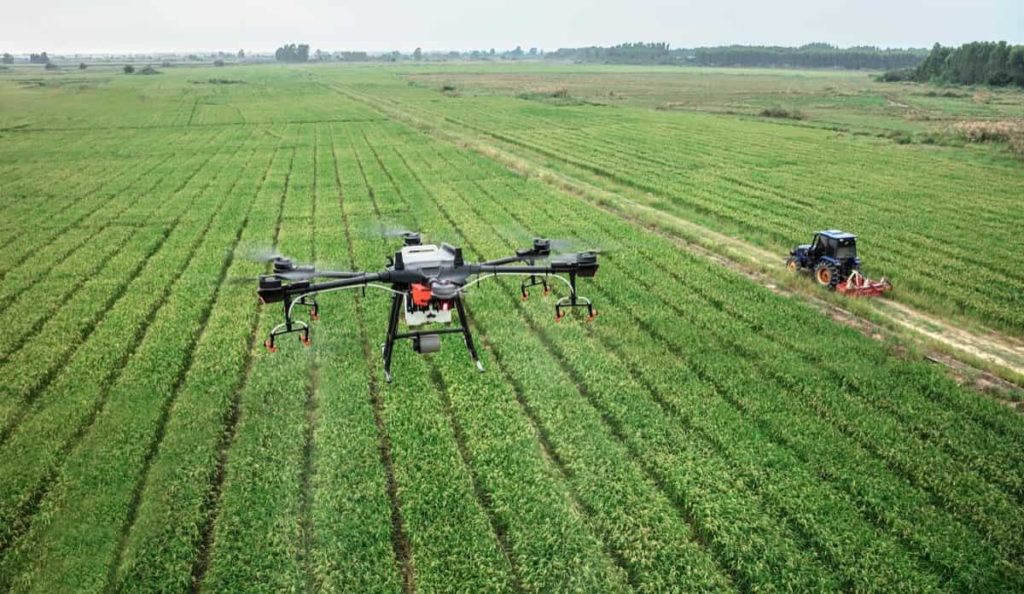
Another key to drone application is the use of drones for agricultural research. From pathogens to insurance claims, drones can cover large areas. Agricultural surveys are already applying drones to verify claims, and high-resolution imaging combined with fast response times offers the potential to collect large amounts of information, which would otherwise require manual labor. It isn’t easy to accomplish on the same timescale.
What are the best weather conditions to fly a drone over a field?
- The drone can fly in any weather condition.
- Drones are water-resistant, but photo quality may suffer if photos are taken in rainy weather.
What distances can agricultural drones fly?
- It depends on the capability and size of the drone.
- Fixed-wing drones have longer flight times and can cover more fields in one flight. For example, a 50-minute flight time will cover up to 12km2.
What is the impact of drones in agriculture?
Drones enable farmers to identify the disease and pest-affected plants faster than traditional methods, monitor water during the irrigation process, and apply fertilizers to different farm areas according to soil needs.
Monitor growth – Crops need to be surveyed and monitored to ensure that the right amount of product will be available at harvest time. It is important for future planning, whether determining the right price for the open market or dealing with cyclical harvesting crops.
Drones can provide accurate data about each stage of crop growth and report any changes before they become a crisis. Multi-spectral images can also provide accurate information about subtle differences between healthy and unhealthy crops that the naked eye may miss. The human eye cannot always tell this difference. But agriculture drones can provide this information in the early stages.
How do I start a drone business?
Finding your niche – Now that you’ve done your general research on drone laws and regulations, the next step is understanding where the industry currently stands. Look at the industries where money is invested in drones, such as agriculture.
Decide on the type and structure of the drone business – As mentioned earlier, one of the advantages of running a drone business is the variety of markets to choose from. When starting with your business, you will want to do a market analysis in your area of operation. Look at what other drone companies are targeting and determine if you want to improve their models and offerings and work as a competitor or with one another in a different market. You can determine which new drone offerings to go after by surveying consumers and zeroing in on your target market.
Decide on standard business operations – Since drones are not too cumbersome to store, you may not need a large physical location to operate your business unless you feel your customers need a storefront. Engaging together can be beneficial. Even if you decide to operate a remote business, you’ll need to consider how far you’ll travel with your drone to get the actual work done. In addition, you’ll want to keep track of your flight records and keep tabs on information like the aircraft’s total flight hours and maintenance logs.
In case you missed it: Top 20 Steps to Boost Rice Yield: How to Increase Paddy Production and Quality
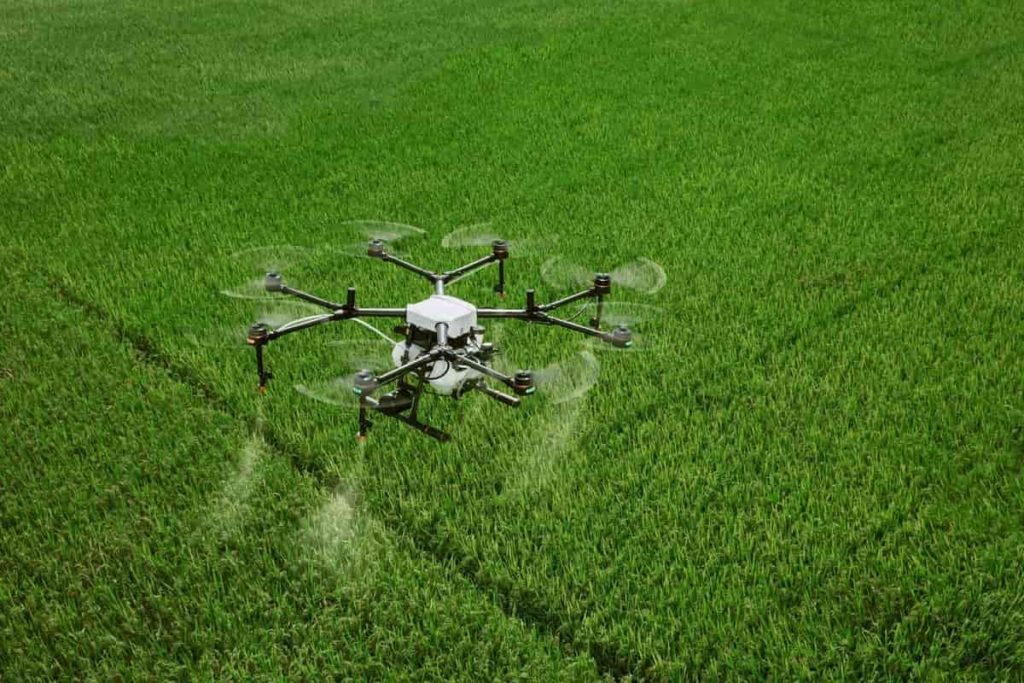
Finding the right equipment – After understanding the dynamics of the drone industry, it’s time to figure out the right drones and equipment you’ll need to meet your target market’s needs properly. With that being said, you need to consider your budget for the cost of the equipment.
Avoid excessive use of chemicals – Drones can be pretty useful, significantly when reducing the use of herbicides, pesticides, and other chemicals. These substances help protect crops. However, their excessive use can be harmful. Drones can identify even the smallest signs of pest infestation and provide accurate information about the extent and area of infestation. It can help farmers determine the necessary dose of chemicals to work with so that crops are only protected, not damaged.
How do drones work?
Drones have two primary functions: flight mode and navigation. A drone must have a power source, such as a battery or fuel. They also have a rotor, propellers, and a frame. A drone’s frame is typically made of lightweight, composite materials to reduce weight and increase maneuverability. In addition, drones require a controller, which allows the operator to use the remote control to launch, navigate and land the aircraft. Controllers communicate with the drone using radio waves such as Wi-Fi.
Drones usually consist of a navigation system, GPS, several sensors, high-resolution cameras, programmable controllers, and tools for autonomous drones. Most farmers now use satellite imagery as an introductory guide to farm management. Unmanned aerial vehicles (UAVs) combined with advanced technology can obtain more accurate data than satellites for precision agriculture. Acquiring data from agricultural drones involves the following steps.
- Analyzing the area: This defines the area being tested. So, the first step involves establishing a circle, analyzing the terrain, and finally uploading the technical GPS data to the drone’s navigation system.
- Use of autonomous drones: As unmanned aerial vehicles (UAVs) are autonomous, they input flight patterns into their pre-acknowledged systems to collect the required data.
- Data uploading: All the required data is collected through multi-spectral sensors. Then, it is processed by various software programs for further analysis.
- Output: After collecting these data, they format it in a structure that farmers can easily understand without any hassle, bringing them one step closer to precision farming.
Where are agricultural drones used?
Soil and field analysis – Agricultural drones can be used for soil and field analysis to aid in field planning. They can be used to install sensors that measure soil moisture content, topographical conditions, soil conditions, soil erosion, soil nutrients, and soil fertility.
Drones can be used with various imaging technologies such as hyperspectral, multi-spectral, thermal, etc., providing time and site-specific information to farmers about crop health, fungal infection, growth constraints, etc. Precision agriculture provides farmers with solid information that enables them to make informed decisions and use their resources more efficiently.
How do farmers use drones in agriculture?
The use of drone technology in drone agriculture is part of precision farming. This technology can help reduce time and increase the efficiency of farmers. Drones in agriculture are only expected to increase as the industry matures. Drones can be used to contribute to data layers that drive precision nutrient and irrigation management. Other data sources for these layers are yield monitors, soil sample results, moisture and nutrient sensors, and weather feeds.
Soil and Field Analysis – For effective field planning, agricultural drones can be used for soil and field analysis. They can be used to install sensors to assess soil moisture content, terrain conditions, soil erosion, nutrients, and soil fertility.
Crop monitoring – Crop monitoring is the monitoring of crop development from sowing to harvesting time. It includes providing fertilizer at the right time, checking pest infestation, and monitoring the effects of weather conditions. Crop monitoring is the only way a farmer can ensure timely harvest, especially when dealing with seasonal crops.
Crop monitoring helps in understanding and planning the next farming season. Drones can help in effective crop monitoring by inspecting the field with infrared cameras, and based on their real-time information, farmers can take proactive steps to improve the condition of the plants in the field.
In case you missed it: Best Fertilizer for Cotton: Organic, Compost Manure, Liquid, NPK, and Schedule
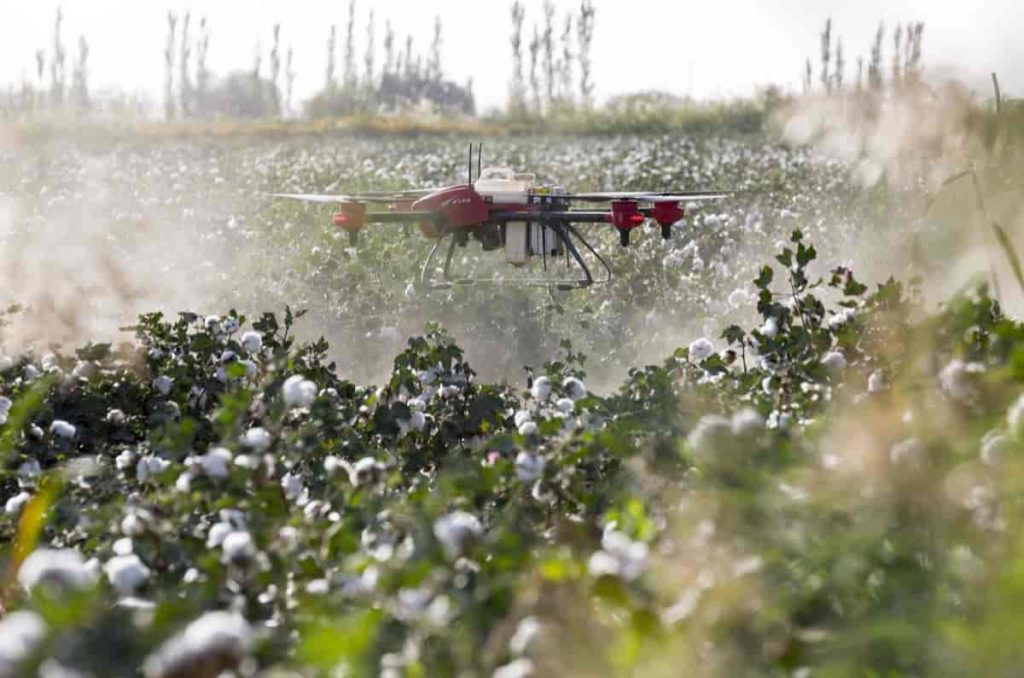
Plantation – Drones can help plant trees and crops, which farmers used to do. This technology will save labor. It is expected that budget-friendly drones.
Livestock management – Drones can monitor and manage large livestock because their sensors include high-resolution infrared cameras, which can find a sick animal and take quick action. Therefore, the impact of drones on health dairy farming will soon become the new normal.
Crop spraying – Agri-drones can be used to spray chemicals because their reservoirs can be filled with fertilizers and pesticides to spray on crops in a much shorter time than conventional methods.
Conclusion
As a result, drones are widely used in agriculture. Drones can also identify dry areas in a field, and then steps can be taken to irrigate such areas with better techniques. Drones are a quick way to map fields easily without using land-based instruments such as rovers and laser scanners, which are time-consuming and not very efficient. Drones positively impact agriculture, and this trend is likely to continue as drone technology is increasingly used in the agricultural industry.
- Types of Pesticides Used in Agriculture: A Beginner’s Guide
- Economical Aquaculture: A Guide to Low-Budget Fish Farming
- 15 Common Planting Errors That Can Doom Your Fruit Trees
- How to Make Houseplants Bushy: Effective Tips and Ideas
- Innovative Strategies for Boosting Coconut Pollination and Yield
- Pollination Strategies for Maximum Pumpkin Yield
- The Complete Guide to Chicken Fattening: Strategies for Maximum Growth
- Natural Solutions for Tulip Problems: 100% Effective Remedies for Leaf and Bulb-Related Issues
- Revolutionizing Citrus Preservation: Towards a Healthier, Greener Future
- Natural Solutions for Peony Leaf and Flower Problems: 100% Effective Remedies
- Maximizing Profits with Avocado Contract Farming in India: A Comprehensive Guide
- Natural Solutions for Hydrangea Problems: 100% Effective Remedies for Leaf and Flowers
- The Ultimate Guide to Choosing the Perfect Foliage Friend: Bringing Life Indoors
- From Sunlight to Sustainability: 15 Ways to Use Solar Technology in Agriculture
- The Ultimate Guide to Dong Tao Chicken: Exploring from History to Raising
- The Eco-Friendly Makeover: How to Convert Your Unused Swimming Pool into a Fish Pond
- Mastering the Art of Delaware Chicken Farming: Essentials for Healthy Backyard Flocks
- 20 Best Homemade Fertilizers for Money Plant: DIY Recipes and Application Methods
- How to Craft a Comprehensive Free-Range Chicken Farming Business Plan
- Brighten Your Flock: Raising Easter Egger Chickens for Beauty and Bounty
- How to Optimize Your Poultry Egg Farm Business Plan with These Strategies
- Subsidy for Spirulina Cultivation: How Indian Government Schemes Encouraging Spirulina Farmers
- Ultimate Guide to Raising Dominique Chickens: Breeding, Feeding, Egg-Production, and Care
- Mastering the Art of Raising Jersey Giant Chickens: Care, Feeding, and More
- Ultimate Guide to Raising Legbar Chickens: Breeding, Farming Practices, Diet, Egg-Production
- How to Raise Welsummer Chickens: A Comprehensive Guide for Beginners
- How to Protect Indoor Plants in Winter: A Comprehensive Guide
- Ultimate Guide to Grow Bag Gardening: Tips, Tricks, and Planting Ideas for Urban Gardeners
- Guide to Lotus Cultivation: How to Propagate, Plant, Grow, Care, Cost, and Profit
- Agriculture Drone Subsidy Scheme: Government Kisan Subsidy, License, and How to Apply Online
- Ultimate Guide to Raising Araucana Chickens: Breed Profile, Farming Economics, Diet, and Care
- Bringing Hydroponics to Classroom: Importance, Benefits of Learning for School Students
- Ultimate Guide to Raising Polish Chickens: Breed Profile, Farming Economics, Diet, and Care
- Ultimate Guide to Raising Australorp Chickens: Profile, Farming Economics, Egg Production, Diet, and Care
- Silkie Chicken Farming: Raising Practices, Varieties, Egg Production, Diet, and Care
- Sussex Chicken Farming: Raising Practices, Varieties, Egg Production, Diet and Care